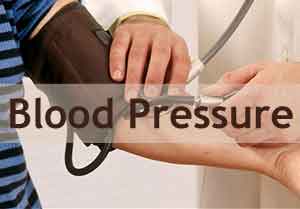- Home
- Editorial
- News
- Practice Guidelines
- Anesthesiology Guidelines
- Cancer Guidelines
- Cardiac Sciences Guidelines
- Critical Care Guidelines
- Dentistry Guidelines
- Dermatology Guidelines
- Diabetes and Endo Guidelines
- Diagnostics Guidelines
- ENT Guidelines
- Featured Practice Guidelines
- Gastroenterology Guidelines
- Geriatrics Guidelines
- Medicine Guidelines
- Nephrology Guidelines
- Neurosciences Guidelines
- Obs and Gynae Guidelines
- Ophthalmology Guidelines
- Orthopaedics Guidelines
- Paediatrics Guidelines
- Psychiatry Guidelines
- Pulmonology Guidelines
- Radiology Guidelines
- Surgery Guidelines
- Urology Guidelines
SPRINT post-hoc analysis: Food for thought on defining the ideal blood pressure target

Adding to the debate on optimal blood pressure control, new findings presented at ESC Congress suggest there may be variations in the ideal target depending on baseline pressure and overall cardiovascular risk.
A post-hoc analysis of the Systolic Blood Pressure Intervention Trial (SPRINT), suggests that for some patients with systolic blood pressure (SBP) readings of 160 mmHg or more, lightening up on blood pressure control might be beneficial.
“The key message from our analysis is that a universal blood pressure target may not be appropriate for all, and that for some with baseline SBP of 160 mmHg or more, the harms of aggressive treatment might outweigh the benefits,” said Tzung-Dau Wang, MD, PhD, from National Taiwan University Hospital.
“Although these results need further verification, it’s worth considering that a universal target of 120 mmHg might not be best for everyone,” he advised.
The SPRINT trial prompted widespread debate about blood pressure guidelines after showing significantly lower rates of fatal and nonfatal major cardiovascular events and death from any cause among intensively treated patients.
In all 9,361 subjects with an SBP of 130 mmHg or higher were randomised to either intensive treatment, which targeted an SBP of less than 120 mmHg, or standard treatment with a target of less than 140 mmHg.
But despite the study’s clear findings of better overall outcomes with intensive treatment, there were suggestions that aggressively lowering blood pressure could be associated with risks as well as benefits.
Now, the post-hoc analysis offers further insight.
Among the SPRINT participants, there were 480 who had a SBP of 160 mmHg or more.
The group’s median 10-¬year Framingham risk score was ≤31.3%. Within this group, after adjustment for age and sex, those who were randomised to the aggressive treatment arm had almost triple the risk of death from any cause compared to those treated less intensively (4.9% vs 1.7%, hazard ratio [HR] 3.12, [95% CI 1.00-9.69]; p=0.012), although the results barely reached statistical significance.
In contrast, there were no increased risks associated with intensive treatment among SPRINT subjects with lower baseline SBP.
Dr. Wang said these new results may help inform the debate that has ensued in the wake of the initial SPRINT results, and shed light on a sub-group of the study population who may more accurately represent “real world patients”.
“It seems there was an intricate interaction between each individual’s baseline blood pressure, their inherent cardiovascular risk, and their degree of blood pressure reduction so we have to consider all three of these elements in managing hypertensive patients,” he concluded.

Disclaimer: This site is primarily intended for healthcare professionals. Any content/information on this website does not replace the advice of medical and/or health professionals and should not be construed as medical/diagnostic advice/endorsement or prescription. Use of this site is subject to our terms of use, privacy policy, advertisement policy. © 2020 Minerva Medical Treatment Pvt Ltd